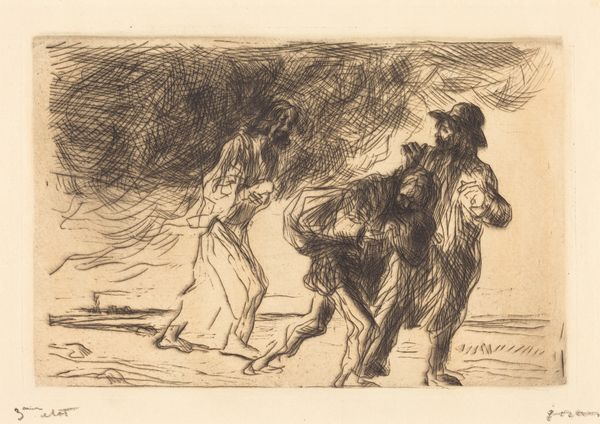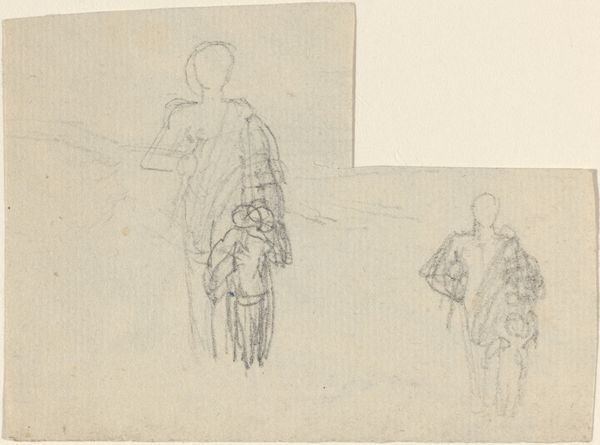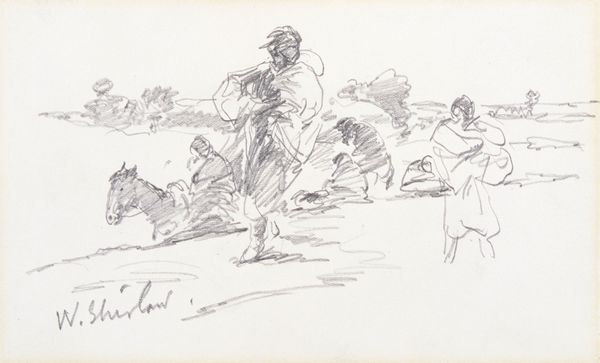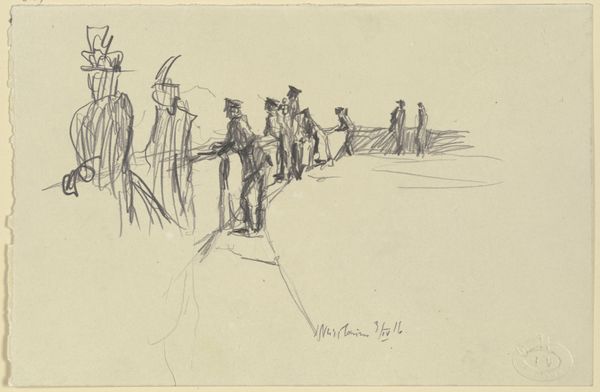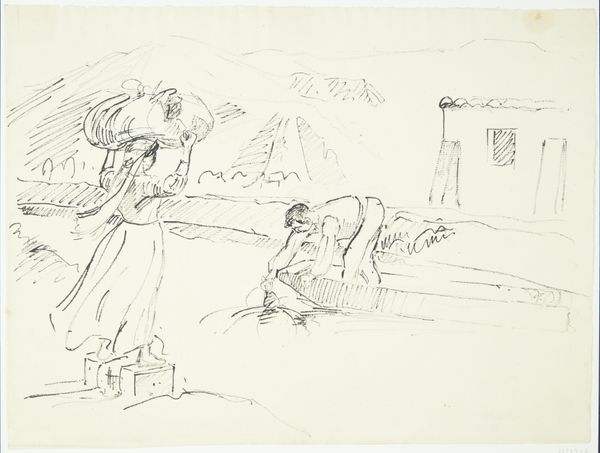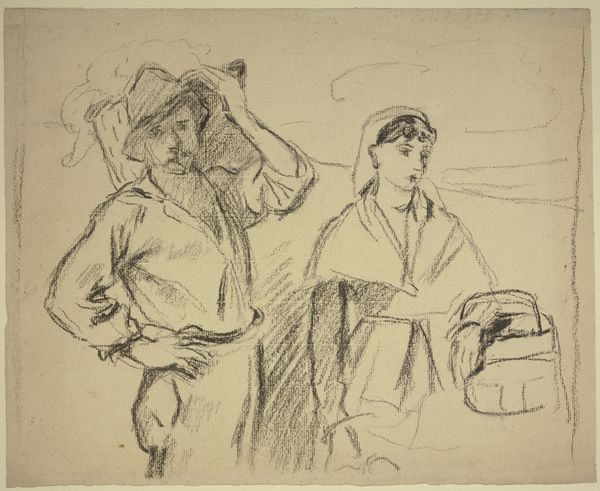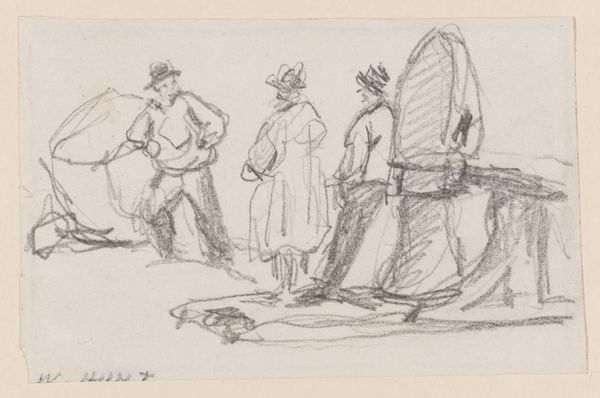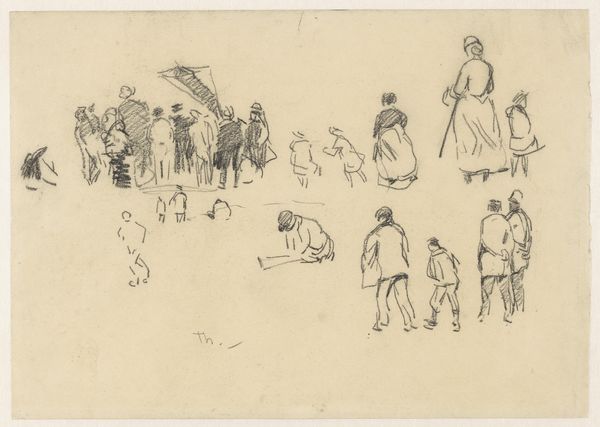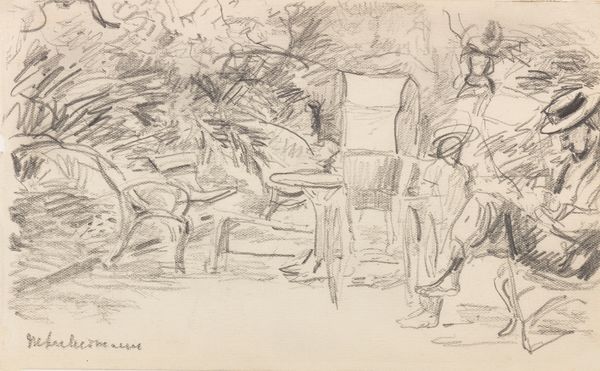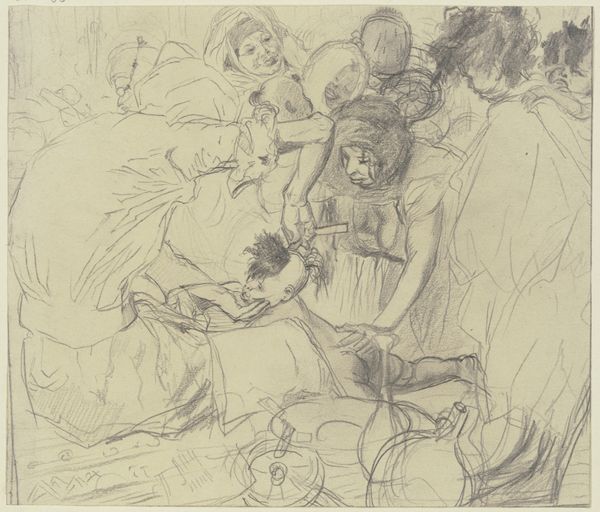
Copyright: National Gallery of Art: CC0 1.0
Jean-Louis Forain made this print using etching, a process that involves drawing into a waxy ground on a metal plate, then bathing it in acid. The resulting incised lines hold ink, which is then transferred to paper under great pressure. Look closely, and you can see the subtle texture that this process creates. Forain was part of a generation of artists who turned to printmaking as a way to engage directly with social issues. Unlike painting, which was then primarily the domain of the wealthy, prints could be produced in multiples and distributed widely. The scene captures the fervent religious atmosphere in Lourdes, a town in France believed to have healing powers. The figures are rendered with expressive, scratchy lines, conveying the emotional intensity of the moment. Forain’s choice of etching as a medium aligns perfectly with his subject matter, allowing him to create a powerful commentary on faith, suffering, and the human condition. By focusing on the materiality and methods of production, we can understand how the print operates not just as an image, but also as a form of social intervention.
Comments
No comments
Be the first to comment and join the conversation on the ultimate creative platform.


